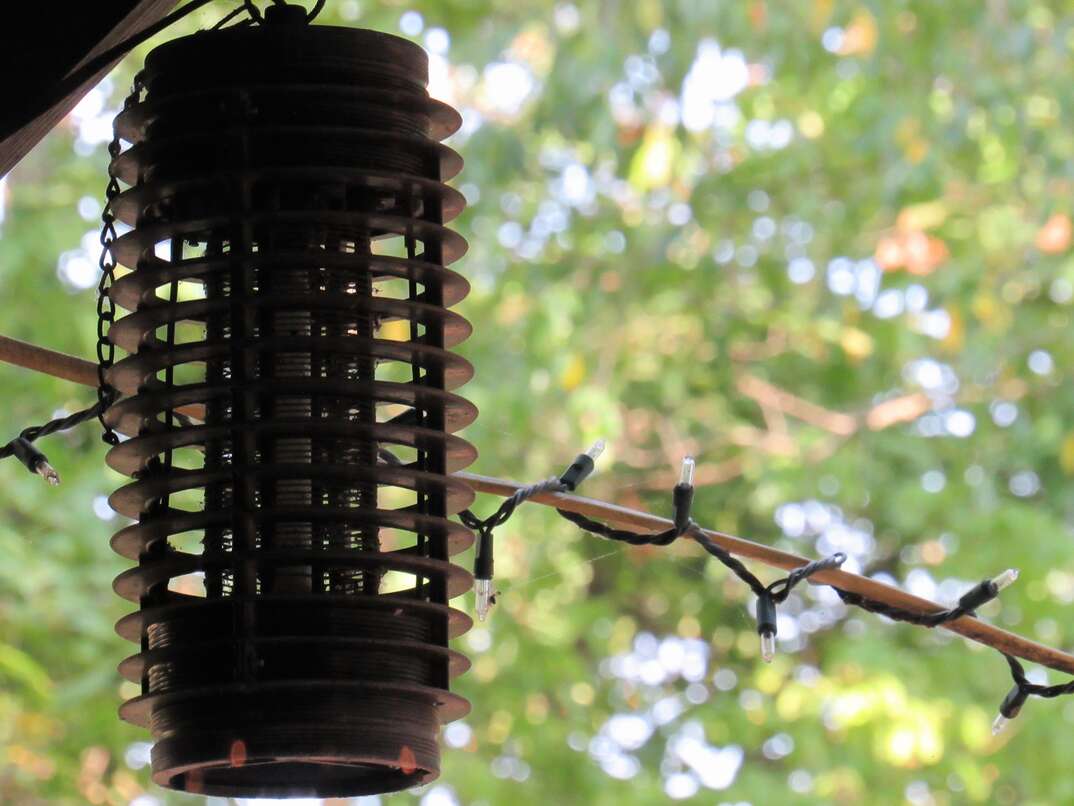- AppliancesElectriciansHVACLandscapingLocksmithPest ControlPlumbingRenovationRoofingT V RepairAll Home Improvement
- Car AccidentClass ActionCorporate LawCriminal DefenseDivorce LawEmployment LawFamily LawFinancial LawLegal AidMedical Injury LawyersMedical MalpracticeReal Estate LawWater Fire RestorationAll Legal
- InvestmentRetirementAll Finance
- Animal InsuranceAutoGeneral InsuranceHealth PolicyHome RentersAll Insurance
- DentalHealth SpecialistsAll Medical
- Animal CareVeterinaryAll Pets
- Auto GlassTowingAll Automotive
Should You Use a Bug Zapper? (The Answer May Be Shocking)

If you can't stand flying insects in your yard or living space, or you keep experiencing itchy bites, resorting to a bug zapper might sound tempting.
Read More Home Improvement Articles
While many people like the satisfying crack of a fly zapper killing a bug, they're a controversial (and often ineffective) solution to an age-old problem.
Electronic insect-control systems — commonly known as bug zappers or bug lights — contain a fluorescent light that lures insects inside. Wire grids or screens surround the light bulb and carry an electrical charge of around 2,000 volts that kills the bugs as they move closer to the light source. The insect's body completes the electrical circuit, delivering a shock powerful enough to vaporize it entirely. This can often produce a buzzing, cracking or zapping noise.
Although bug zappers are effective for killing certain insects, they're not a good option if you simply want to keep insects out of your garden or living space. In this situation, there are other methods you can use to deter flying insects.
Bug zappers come in various designs and often have tubular or cube-shaped housing. You can also purchase bug lights disguised to look like a regular outdoor lantern. If you decide to use a bug zapper, choose a model with protective housing to prevent electric shocks — especially if you have young children or pets.
What Types of Bugs Do They Zap?
Bug zappers attract any flying insect naturally drawn to ultraviolet light. Typically, they're most effective against the following insects:
- Moths
- Grasshoppers
- Flies
- Beetles
- Corn borers
- Cutworms
- Leaf cutters
Bug zappers may kill some mosquitos, but they're not an effective method for reducing the number of mosquitos in your home or yard. According to the American Mosquito Control Association, mosquitos only account for a minimal proportion of a bug zapper's kills. Furthermore, these devices don't do much to reduce the number of live mosquitos in your backyard.
Bug Zappers May Kill Off Beneficial and Non-Harmful Insects
Unfortunately, bug zappers kill insects indiscriminately, and the AMCA estimates that they kill up to 350 billion beneficial insects per year in the United States. Many of these insects perform a vital role in the ecosystem by consuming pest insects or pollinating plants, and many bird and animal species rely on beneficial insects as a food source. Therefore, the overuse of bug zappers could contribute to the decline of local flora and fauna.
More Related Articles:
- What to Look For When Hiring an Exterminator
- Are Pest Control Products Dangerous For Kids and Pets?
- What Are Ultrasonic Pest Repellers?
- 10 Ways to Prevent Termites
- How to Spray for Mosquitoes
So, Should I Use a Bug Zapper?
According to Consumer Reports, many experts advise against using bug zappers as a pest control method. Not only will they kill relatively few biting insects, but they'll also constantly zap beneficial insects that you'd want to encourage in your environment. They can also pose a risk to your family and pets if they touch the electrical wires or grids by accident.
What Are Some Alternatives to Bug Zappers?
So, what can you do to avoid itchy bites if a zapper isn't the answer? You could consider applying an insect repellant containing DEET to your skin or purchase a backyard misting system. However, these systems can also kill nontarget insects and damage local ecosystems. A more straightforward method is to place fans along the edges of seating areas to repel insects. This technique can work for deterring mosquitos because they're relatively poor fliers, but it's by no means foolproof.
Carbon-dioxide traps are an effective way to lure in and kill biting insects without trapping beneficial bugs. These traps work by mimicking the effect of a human or animal breathing, releasing carbon-dioxide into the air. The biting insect then moves toward the trap in the expectation of a blood meal and gets stuck.
Consumer Reports also recommends autocidal gravid ovitraps (AGO traps) to get rid of Aedes mosquitos. These traps resemble a bucket and contain damp materials such as hay. This structure creates an attractive nesting site for female mosquitos and encourages them to fly inside to lay their eggs. Once inside, an integrated screen stops them from laying eggs in the nesting material, and the adults become stuck in sticky traps. Some brands allow mosquitos to lay their eggs but contain a larvacide that infects the adults. The larvacide gradually kills the infected mosquito and can spread to other breeding sites to enable more widespread eradication.
If you have a severe infestation, it may be best to hire a professional mosquito control company to get rid of mosquitos using CDC- and EPA-approved methods. These include:
- Addressing infestation sources, such as areas of standing water
- Applying chemicals to kill adult mosquitos and their larvae
- Encouraging natural mosquito predators
Elocal Editorial Content is for educational and entertainment purposes only. Editorial Content should not be used as a substitute for advice from a licensed professional in your state reviewing your issue. Systems, equipment, issues and circumstances vary. Follow the manufacturer's safety precautions. The opinions, beliefs and viewpoints expressed by the eLocal Editorial Team and other third-party content providers do not necessarily reflect the opinions, beliefs and viewpoints of eLocal or its affiliate companies. Use of the Blog is subject to the
Website Terms and Conditions.The eLocal Editorial Team operates independently of eLocal USA's marketing and sales decisions.



